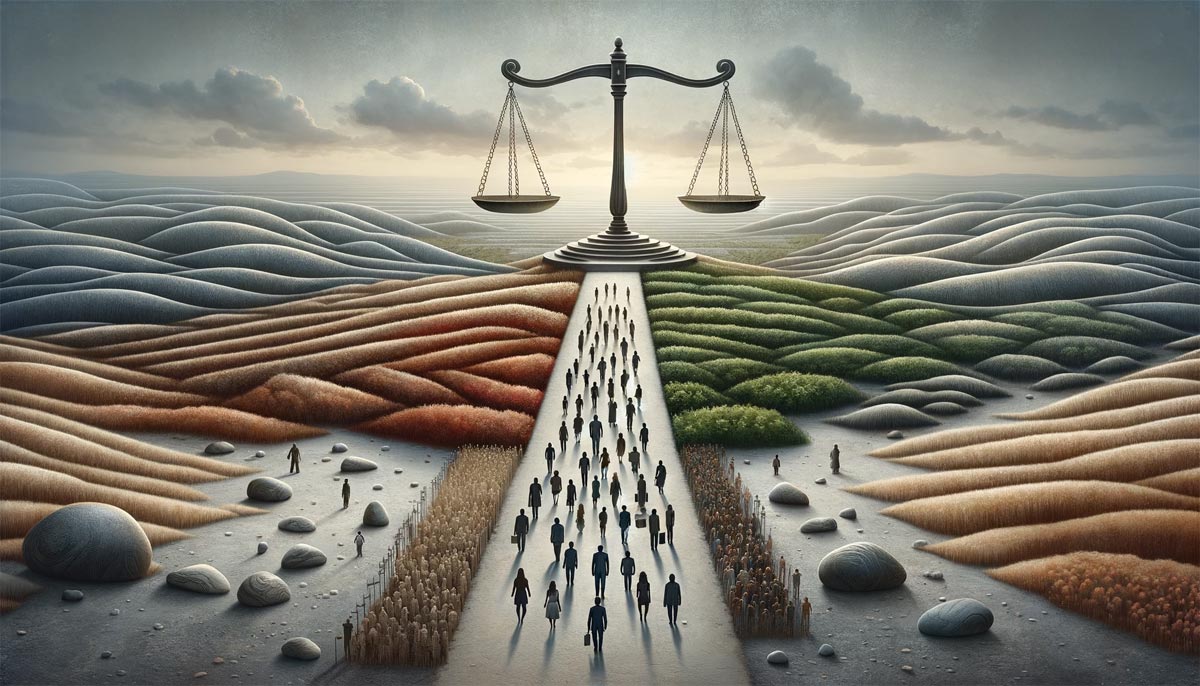
Types of Inequality in Society: An In-Depth Exploration
In today's world, the fabric of society is woven with various strands of inequality. These disparities manifest in numerous forms, deeply rooted in the socioeconomic, cultural, and political dimensions of communities worldwide. This article aims to shed light on the multifaceted nature of inequality, spanning economic disparity, gender discrimination, racial biases, and more. By providing a detailed examination of these issues, alongside current efforts to mitigate them, we endeavor to present a comprehensive narrative that is both enlightening and actionable.
Understanding Inequality
Economic Disparity
Economic inequality, often referred to as the wealth gap, is a pressing issue characterized by the uneven distribution of financial resources and opportunities among a population. This form of disparity can be observed through various indicators, including income inequality, where a significant divide exists between the highest and lowest earners, and wealth inequality, which highlights disparities in the accumulation of assets.
Causes and Effects
The roots of economic divide are complex, stemming from factors such as unequal access to education, systemic biases in employment, and inherited wealth. The consequences are far-reaching, affecting not only individual well-being but also societal cohesion, leading to heightened stress, diminished health outcomes, and reduced social mobility.
Racial Discrimination
Racial inequality represents another profound form of societal injustice, where individuals face discrimination based on their race or ethnicity. This discrimination manifests in various sectors, including employment, education, healthcare, and the justice system.
Systemic Racism
Systemic racism plays a pivotal role in perpetuating racial disparities. It encompasses institutional practices and societal norms that disadvantage minority groups, contributing to a cycle of poverty, marginalization, and reduced opportunities for affected communities.
Gender Inequality
Gender inequality refers to the unequal treatment and perceptions of individuals based on their gender. This type of inequality is evident in disparities in pay, employment opportunities, political representation, and access to education and healthcare.
Impact on Society
The impact of gender discrimination extends beyond individual grievances, hindering economic growth, affecting family dynamics, and undermining efforts towards social equality.
Statistical Overview
To grasp the extent of these inequalities, it is essential to consider statistical data. Reports indicate that the wealth gap continues to widen, with the richest 1% of the population owning more than half of the world's wealth. Similarly, racial and gender disparities remain prevalent, with minority groups and women disproportionately affected by poverty, unemployment, and lack of access to essential services.
Current Initiatives and Solutions
Efforts to combat inequality are as diverse as the issues themselves. Governments, non-profit organizations, and grassroots movements are implementing policies and programs aimed at promoting social justice, enhancing equal opportunities, and ensuring fair treatment for all.
Policy Reforms
Policy reforms targeting economic inequality include progressive taxation, increased minimum wages, and social welfare programs. In the realm of racial and gender disparities, affirmative action policies, anti-discrimination laws, and educational scholarships are notable examples of initiatives designed to level the playing field.
Community Engagement
Community-based programs play a crucial role in addressing inequality by empowering marginalized groups, providing access to resources, and fostering environments of inclusivity and respect.
Global Movements
The rise of global movements advocating for social justice, such as campaigns against systemic racism and initiatives promoting gender equality, highlights the growing awareness and demand for change on a worldwide scale.
Conclusion
The struggle against inequality is a collective endeavor, requiring sustained effort, empathy, and solidarity from all sectors of society. While significant challenges remain, the ongoing initiatives and the resilience of those affected offer hope for a more equitable future. By understanding the types of inequality that permeate our world and supporting efforts to eradicate them, we can move closer to realizing a society where fairness, opportunity, and justice are not ideals but realities for all.
In aligning with the principles of expertise, authoritativeness, and trustworthiness, this article provides an in-depth analysis of societal inequalities, backed by statistical evidence and current research. It is imperative that we continue to engage in informed discussions, advocate for meaningful change, and implement effective solutions to address the inequalities that undermine the fabric of our communities. Together, we can forge a path towards a more just and equitable society.
Society



